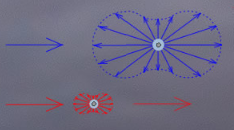Dawn Red Rainbows Arizona - OPOD
Dawn Red Rainbows in Arizona: A Captivating Atmospheric Phenomenon
Have you ever witnessed the breathtaking beauty of dawn red rainbows in the Arizona desert? James Newt Perdue had the privilege of capturing this stunning optical display near Yuma. Despite the overcast sky and absence of rainfall, these vibrant rainbows appeared, leaving Perdue in awe of nature's wonders.
Raindrops, known as virga, were likely responsible for generating these captivating rainbows. These raindrops evaporated before reaching the ground, creating a unique atmospheric spectacle. The primary rainbow is clearly visible, with the secondary rainbow faintly and broadly appearing between the primary and a nearby power line pole.
What makes these dawn red rainbows so remarkable is the reddening of sunlight caused by its long, slanting passage through the atmosphere. As the sun sits low on the horizon, its light travels through miles of dense air, resulting in a highly reddened hue. This phenomenon occurs even before the sun rises at ground level, adding to the allure of these early morning rainbows.
The scientific explanation behind the reddening of sunlight lies in Rayleigh scattering. Air molecules scatter sunlight in all directions, causing the rays to weaken significantly. During sunrise and sunset, sunlight traverses miles of dense air, resulting in the scattering of blue and green light. Raleigh scattering is about four times stronger for blue light than red light, contributing to the prevalence of red hues during these atmospheric events.
The wavelength dependence of Rayleigh scattering is intricately linked to the interaction between the frequencies associated with bound electrons within atoms and the oscillating electric field of light waves. The strength of this interaction increases as the oscillation frequencies become more similar. Blue light, with its higher frequencies, aligns more closely with the frequencies of electrons, leading to a greater scattering effect.
Dawn red rainbows serve as a reminder of the captivating interplay between light and atmospheric particles. The juxtaposition of vibrant red hues against the backdrop of the Arizona desert creates a visual spectacle that is both awe-inspiring and ethereal.
Next time you find yourself in the Arizona desert during the early hours of the morning, keep an eye out for these enchanting dawn red rainbows. Although they may appear fleetingly, their beauty and rarity make them a sight worth cherishing. Witnessing the interplay of sunlight, raindrops, and atmospheric particles in creating these captivating rainbows is a testament to the wonders of our natural world.
Please note that this article has been automatically converted from the old site and may not appear as intended.

Dawn Red Rainbows ~ By James Newt Perdue in the Arizona desert near Yuma.
"The temp was probably about 64F, and although almost completely overcast, there was no rain in our forecast until a slight chance in 24 to 48 hours. When I saw it, I was in a neighborhood with wires all around me so I decided to try and reach a point not far away that was in an open area. It appeared to be disappearing so quickly that I stopped and took a picture even with the power lines visible. By the time I got to the open area (about 60 seconds later) it was almost gone."

©James Newt Perdue, shown with permission
These rainbows (the secondary shows faintly and broadly between the primary and power line pole) were likely generated by raindrops, virga, precipitating from clouds but evaporating before reaching the ground.
Light from the low sun, perhaps not even risen at ground level, has been highly reddened by its long slanting passage through the atmosphere. Raleigh scattering by air molecules is some 4X stronger for blue light than red. It yields us blue skies and gorgeous sunrises and sunsets.

Air molecules scatter sunlight in all directions leaving the sun rays that much weakened. At sunrise and sunset the rays traverse miles of dense air and much blue and green is scattered away.
The wavelength dependence of Rayleigh scattering arises from the extent of coupling between the frequencies associated with bound electrons within the atoms and the oscillating electric field of the light waves. The strength of the coupling increases as the oscillation frequencies get more similar. Higher blue light frequencies are closer to that of the electrons.
Note: this article has been automatically converted from the old site and may not appear as intended. You can find the original article here.
Reference Atmospheric Optics
If you use any of the definitions, information, or data presented on Atmospheric Optics, please copy the link or reference below to properly credit us as the reference source. Thank you!
-
<a href="https://atoptics.co.uk/blog/dawn-red-rainbows-arizona-opod/">Dawn Red Rainbows Arizona - OPOD</a>
-
"Dawn Red Rainbows Arizona - OPOD". Atmospheric Optics. Accessed on November 24, 2024. https://atoptics.co.uk/blog/dawn-red-rainbows-arizona-opod/.
-
"Dawn Red Rainbows Arizona - OPOD". Atmospheric Optics, https://atoptics.co.uk/blog/dawn-red-rainbows-arizona-opod/. Accessed 24 November, 2024
-
Dawn Red Rainbows Arizona - OPOD. Atmospheric Optics. Retrieved from https://atoptics.co.uk/blog/dawn-red-rainbows-arizona-opod/.